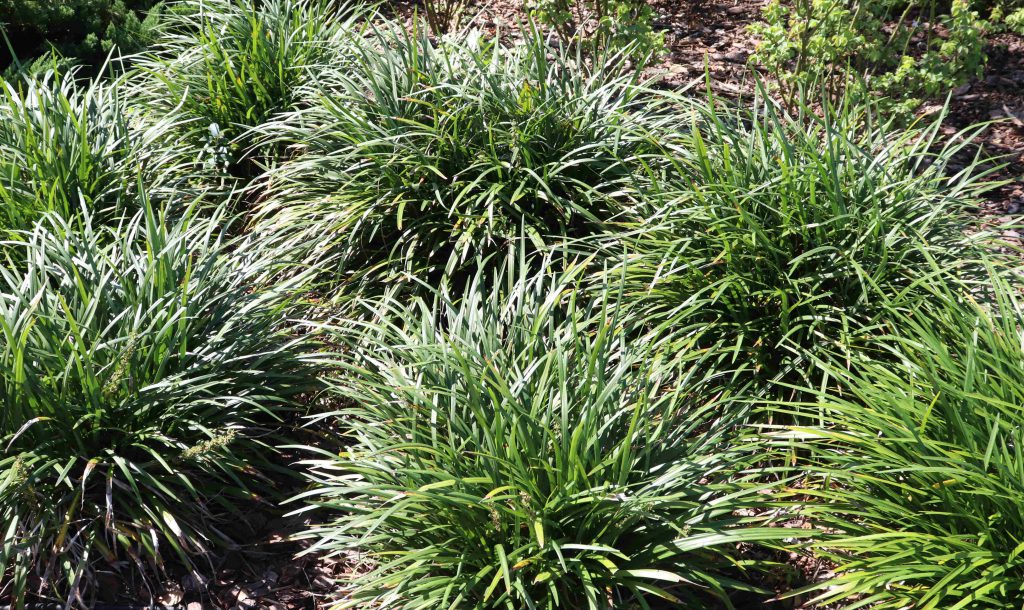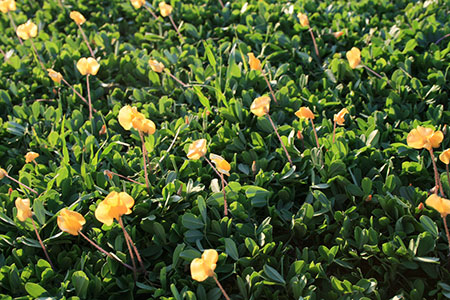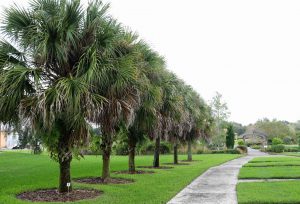You may be familiar with Florida-Friendly LandscapingTM (FFL), but have you heard the term Sustainable Landscaping? Sustainable Landscaping is a new class being offered in the FFL program at UF/IFAS Extension Orange County. Sustainability is defined by the Oxford dictionary as “the ability to be maintained at a certain rate or level.” A second definition is “avoidance of the depletion of natural resources in order to maintain an ecological balance.” In terms of landscaping, sustainability means to limit inputs and outputs of our products, energy, and water used in our landscape. Let’s start with importing products into the home landscape. Think of some of the items that are purchased to use in and apply to the landscape. These items may include, hand tools, plants, fertilizers, pesticides, and gas-powered equipment.
Now think of how you can avoid bringing imported materials into your landscape:
- How about reducing the size of your lawn and area of grass to mow?
- Can you recycle more of your yard waste and reuse it as compost?
- How could you conserve water in your landscape?
Here’s a beginner’s list to increase the sustainability of your landscape:
1. Choose low-maintenance plants
Buy plants that have very few pest, disease, pruning, and fertilizer needs. The Schillings Dwarf Holly (Ilex vomitoria ‘Schilling’s Dwarf’) is one example of a hardy native plant for Florida that requires infrequent pruning and is highly drought-tolerant. Other low-maintenance superstars include groundcovers such as liriope (Liriope muscari), bulbine (Bulbine frutescens), and native Elliot’s lovegrass (Erigrostis elliottii). Select plants that are well adapted to Florida’s environment to eliminate or greatly reduce the need to spray pesticides for insects and diseases. In addition, cover the ground with plants and mulch so there will be less room for weeds to grow. Finally, adopt an ecological approach to landscaping where you attract beneficial insects to prey on unwanted pests. For example, ladybugs love to eat aphids and mealy bugs; just be patient and wait for them to come and do the job.

2. Recycle your nutrients, don’t throw them away
Close the loop! Sustain your soil fertility by mulching your grass clippings, using mulch, and planting fertility-building species. Mother Nature does not like bare spots on the Earth, so cover all soil with plants or mulch. Use tree-based mulch rather than rocks or rubber mulch. Mulch from trees will provide nutrients, increase soil moisture holding capacity, and have cooling effects. Grasses and Fabaceae (pea) family plants are great for building your soil with their high amounts of carbon and nitrogen, respectively. The grass trimmings will add organic matter and nutrients to your soil. Pea family plants such as perennial peanut (Arachis glabrata) contain high levels of nitrogen. When mowed or trimmed they release the nitrogen into the ground. You can add these trimmings to your compost pile or simply take your trimmings and chop and drop them as mulch. Your landscape can eventually take on forest-like properties where nutrients are slowly released into the soil and no additional fertilization is needed.

3. Be waterwise
Fresh water is a finite resource not to be wasted. In fact, 60% of homeowner water is used to irrigate landscapes and lawns. To conserve water, check your irrigation system often. Adjust heads and make repairs as needed. Turn off your irrigation system in the summer and whenever we get abundant rain. Install a rain barrel or a small pond to catch and store water. Build a rain garden to allow more absorption of rainwater back into the ground. Finally, choose plants that are drought tolerant such as coontie (Zamia floridana), sabal palm (Sabal palmetto), and Walter’s viburnum (Viburnum obovatum). These are all Florida natives and do not require regular watering. For lawns, consider bahiagrass (Paspalum notatum), which has a high drought tolerance and can survive extended dry periods.

In summary
Choosing landscape plants that have minimal fertilizer needs and a high resistance to drought, nematodes, and pathogens are the key to a sustainable landscape. This translates into savings in water, energy, dollars, and reduced impacts to the environment. Visit Eventbrite and Facebook to see our upcoming classes on and Sustainable and Florida-Friendly LandscapingTM.
Resources
Design Strategies for a Sustainable Home Landscape
Policies that Address Sustainable Landscaping Practices
 0
0
